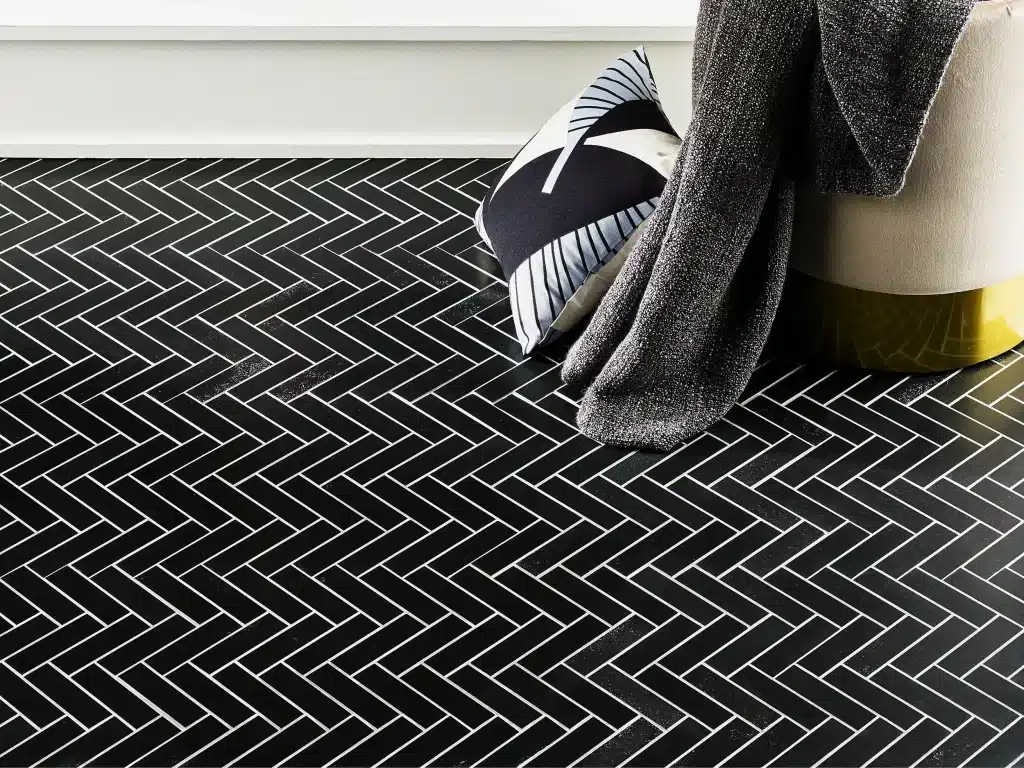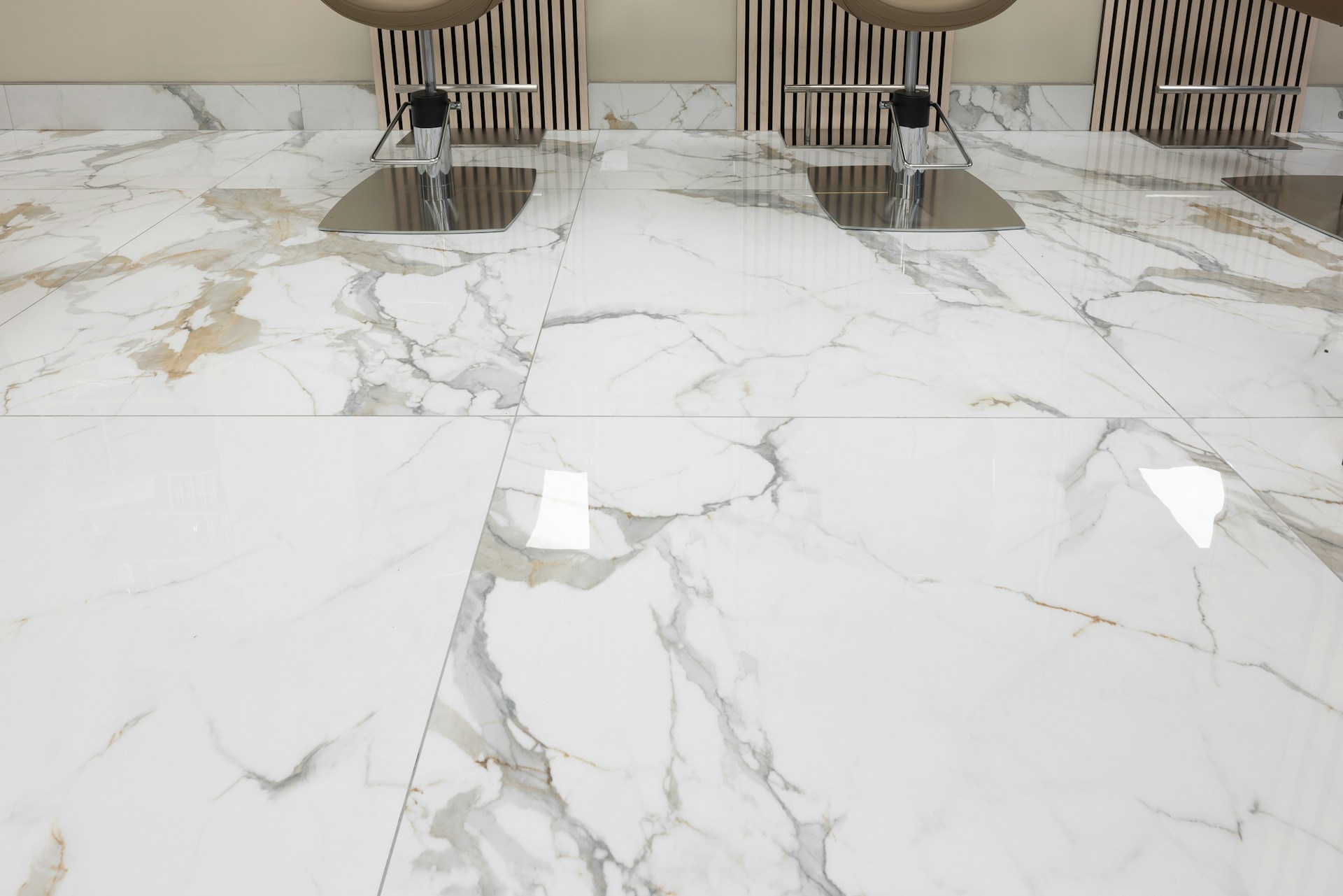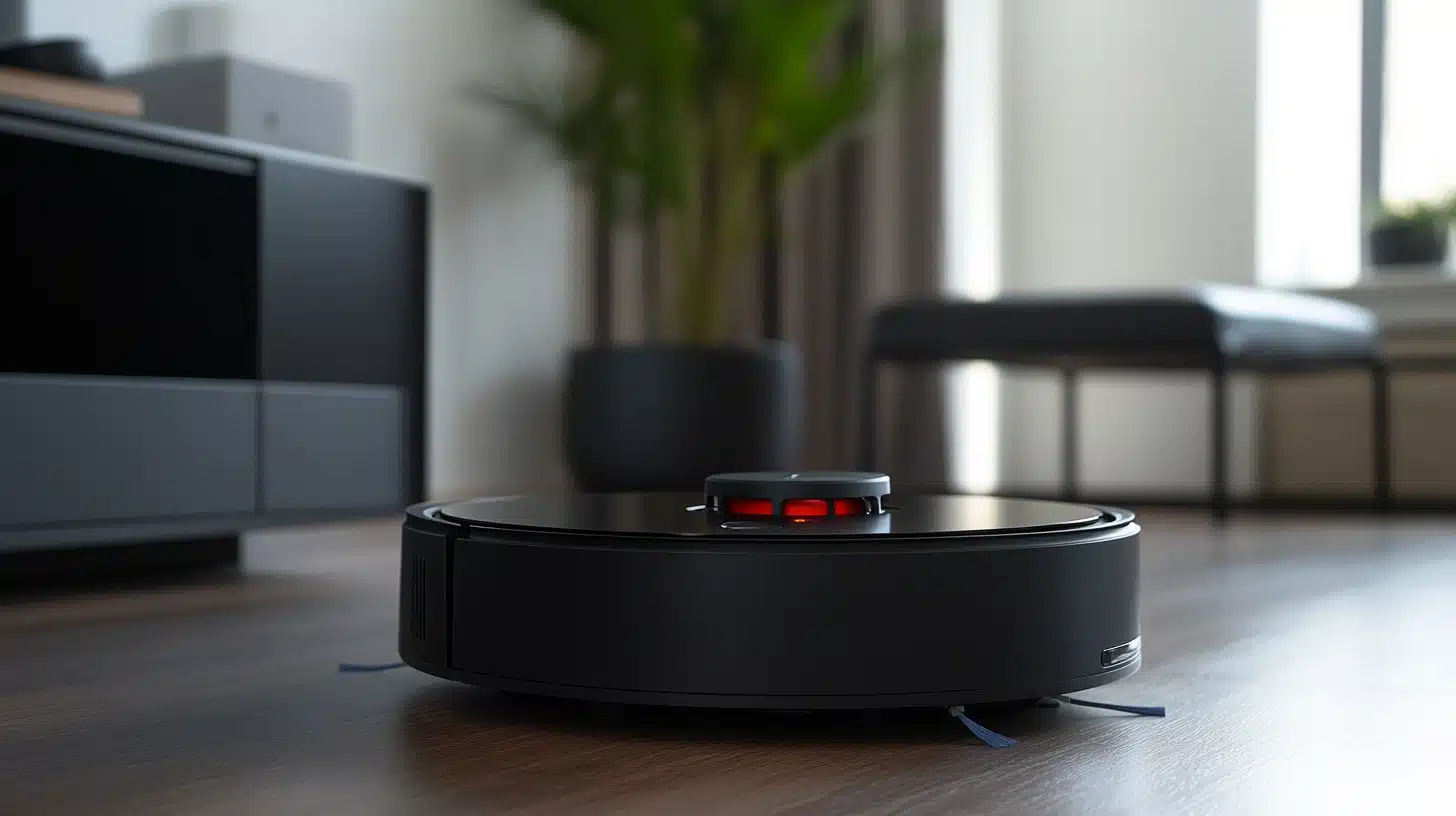Are Black Herringbone Tiles Easy to Clean?
Black is a color that exudes luxury and gives the space a charming appeal. Black Herringbone tiles give the space character and unique dimension.
Whether it is a ceramic tile, a porcelain tile, or a natural stone like marble, the texture of the tile plays a major role in influencing the ambiance and maintenance.
However, spots and stains on a tile can hamper the look of a black tiled wall. Due to their susceptibility to showcasing scratches over lighter shades, black floors demand attention.
Moreover, the ease of cleaning a herringbone tile depends on the material of the tile. Therefore, maintenance can be easy but tricky.
Are you curious to learn more about it? This blog will cover every aspect related to black herringbone tiles. Let’s begin!
Three Most Common Herringbone Tiles
The process of cleaning a surface depends a lot on the material a tile is made out of. Therefore, here are the three most common tiles and ways of maintaining each.
1. Ceramic Tiles
Since ceramic tiles combine red, brown, and white clay, these tiles have a coarse texture, making them less slippery.
However, these tiles are slightly porous and need instant attention to dry them faster.
Maintenance or Cleaning Tip: Vacuum your tiles a few times weekly to maintain the luster.
Constant exposure to sand and light can dull a surface. Therefore, regularly mopping the floor will maintain the shine.
Also, opt for a rag instead of using a sponge mop so that you can scratch the dirt off the surface without risking any damage.
2. Porcelain Tiles
Porcelain tiles, like ceramic tiles, can withstand the longest showers. Therefore, a porcelain herringbone tile pattern on the bathroom floor is ideal as it is extremely water-resistant.
These tiles are way more impervious to water as compared to ceramic tiles.
Maintenance or Cleaning tip: Clean the herringbone tiles surface with a mild cleaning product at least once weekly.
Since the surface is non-porous, the water will run off. Avoid using harsh cleaning detergent, as it might compromise the quality of the surface.
3. Stone Tiles
Like marble tiles, natural stone tiles have high porosity due to their crystalline structures.
Therefore, these tiles can absorb all kinds of liquids, making it easier for the surface to get stained.
Maintenance or Cleaning Tip: Start by wiping off excess water. Once the extra water has been wiped off from the surface, sweep the floor using a mop soaked in diluted dish soap and warm water.
Once that is done, clean the entire surface with a wet cloth to wipe off the residue.
9 Best Surface Cleaning Methods

The following nine methods are generic in nature. Therefore, whether you have a porcelain tile or tiles made out of natural stones, these methods must be followed regularly to maintain the luxury of a black surface.
1. Regular Sealing
Sealing is the best way to prevent the porous tiles from absorbing water.
You can even invest in glazed ceramic and porcelain tiles for a smooth surface. This makes it easier to mop the floor and dry it faster.
2. Soft Microfiber Mop
A soft mop ensures there are no scratches on the floor while cleaning. Therefore, dip your mop in warm water, dish soap, and a mild surface cleaner.
Use this liquid regularly to clean surfaces with excessive collection of grime and dirt. Dry the space immediately to prevent the accumulation of water stains.
3. Grout Sealing
To clean the gaps between tiles, use a soft brush with bristles soaked in a cleaning liquid.
Once the gaps and lines are cleaned, wipe the surface with a clean cloth to remove the extra dirt.
You can even use a steam cleaner to remove stubborn stains. However, you must use a dry rag to remove the dried grout.
4. Prevent Scratches
Avoid dragging heavy pieces of furniture on a herringbone-tiled floor. Such scratches are permanent and will interfere with the overall ambiance of a place.
Therefore, exercise caution and pick up your pieces if you wish to keep them elsewhere.
5. Instant Wiping
In case there is a massive spill in the bathroom, clean it immediately.
Since a marble herringbone surface will absorb liquid quickly, make sure you soak it up with a dry cloth and then clean it with a floor cleaner.
6. General Preventive Measures
Ensure there is enough ventilation in the room where these tiles have been fixed.
At certain times, the accumulation of moisture can develop cracks in surfaces. Therefore, clean a wet surface with a dry rag or a dry mop.
7. Follow a Consistent Cleaning Process
While porcelain tiles can be cleaned twice a week to maintain the surface, marble tiles must be cleaned at least once every three days.
Therefore, simply wiping off water from the floor daily can maintain the shine of a surface.
Cleaning tiles with a mild detergent once a week, irrespective of the material, is highly recommended.
8. Dry the Water Spots
Drying spots and stains of water are a must. Chlorine deposits leave a white outline, which can be seen very prominently on a black-tiled surface.
Therefore, use a mild detergent to mop a black herringbone floor. Complete the process by wiping off excess water with a dry rag.
9. Black Herringbone Walls
To prevent the accumulation of dirt and dust, clean the walls with a dry, soft cloth every day.
Keep the grout lines clean by soaking the cloth with a vinegar solution to ensure no residue is left behind.
Conclusion
The whole point of featuring a black surface in a space is to enhance visual integrity and attractiveness.
Maintaining any surface of any kind or color demands a meticulous approach.
Consistent and regular efforts ensure that the surface is not compromised due to wear and tear.
Harsh cleaning products are never recommended; the simpler and more organic a cleaning solution, the better.
The frequency of cleaning black herringbone tiles also depends on your schedule.
Comment and share your views on how you clean black herringbone tiles at home.







